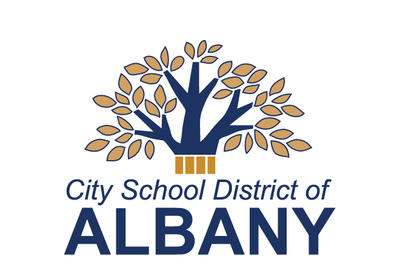
Grade 4 expectations
New York State learning standards outline what a student should know and be able to do by the end of the grade level. There are also additional skills that a well-rounded student should possess. Listed below are examples of academic expectations for fourth grade students. These should be viewed holistically and are not meant to determine promotion or retention; a student may demonstrate or be on track for proficiency without having mastered every skill. Teachers intervene as appropriate to support skills development.
- Use knowledge of syllable types, word parts (e.g. roots, prefixes, suffixes) and letter-sound correspondence to read unfamiliar multisyllabic words
- Read grade-level text with accuracy, appropriate rate and expression
- Provide relevant and specific details from texts to support answers and inferences
- Determine a text’s theme or main idea and how key details support these
- Describe a character, setting or event using specific details
- Identify text structure (e.g., compare/contrast, cause/effect, sequence) and structural elements (e.g., stanza, meter, settings, dialogue, stage directions)
- Compare/contrast a narrator’s point of view, the difference between first- and third-person
- Explain how claims in a text are supported by relevant reasons and evidence
- Explain how charts, graphs, diagrams, illustrations, etc., aid understanding
- Read and understand grade 4 literature and informational texts
- Engage in collaborative discussions, give oral reports, share information and/or recount an experience
- Express ideas clearly and build on others’ ideas
- Come to discussions prepared, having read or studied required material
- Use context clues and knowledge of common Greek and Latin roots, prefixes and suffixes to determine word meaning
- Explain the meaning of simple similes and metaphors in context
- Recognize and explain the meaning of common idioms, adages and proverbs
- Relate words to their antonyms (opposites) and synonyms (similar meaning)
- Demonstrate grade-appropriate use of spelling, grammar, usage and mechanics
- Write an argument to support claim(s) using clear reasons and relevant evidence
- Write informative texts to share relevant ideas and information
- Write narratives to develop real or imagined experiences or events using effective technique, descriptive details and clear sequence
- Use transition words (e.g., therefore, for example) to help develop key ideas
- Conduct research to answer questions and to build knowledge
- Take notes and create outlines using appropriate strategies
- Grade Level Fluencies: Add and Subtract within 1,000,000
- Geometry
- Draw, identify lines and angles; classify shapes by properties of lines and angles
- Operations and Algebraic Thinking
- Use the four operations with whole numbers to solve problems, including multi-step problems
- Gain familiarity with factors and multiples
- Generate and analyze patterns
- Number and Operations in Base Ten
- Multiply and divide whole numbers
- Use place value understanding and properties of operations to add and subtract using the standard algorithm
- Number and Operations (Fractions)
- Extend understanding of fraction equivalence and ordering
- Build fractions from unit fractions
- Understand decimal notation for fractions, and compare decimal fractions
- Measurement and Data
- Solve problems involving measurement and conversion of measurements
- Represent and interpret data using a line plot
- Geometric measurement; measure and understand concepts of angle
- Understand and apply scientific concepts related to Physical, Earth, and/or Life Science
- Recognize the historical development of ideas; energy, waves; structure, function and information processing; Earth’s water and systems; processes shaping the Earth
- Use scientific equipment to take scientific measurements, including units
- Recognize that objects have properties that can be observed, described, and/or measured (e.g., length, width, volume, size, etc.)
- Make measurements using nonstandard units and standard metric units
- Using scientific inquiry and demonstrating knowledge of scientific process and concepts
- Develop questions about New York state history, geography, economics and government
- Describe Native American groups living in the region that became New York state
- Describe how human activities change places and regions
- Explore the role of New York in westward expansion, trade, technology and immigration
- Identify types of political systems used at various times in state and national history
- Make independent decisions guided by the elements/principles of art
- Develop technical skills and select materials/tools/media to serve creative intent
- Discuss, create, categorize, interpret and present artistic concepts from various world cultures collaboratively
- Maintain tone, pitch, rhythm, tempo and dynamics while singing
- Use instruments to create and perform music
- Demonstrate knowledge of the elements of music such as melody, rhythm, harmony, form and style through identifying and analyzing a variety of genres of music from various world cultures, and composing music with a specific purpose and/or content
- Perform basic motor and manipulative skills and movement patterns
- Show competence in a variety of physical activities
- Demonstrate safe and responsible, personal and social behavior
Keep your child engaged at home
The following are simple every day activities you can do at home and in the world to help support what your child is learning during the school day.
- Set aside quiet time every day for reading. Ask students questions about the book they have chosen.
- Encourage students to select informational books about science, history, art, music and famous people. Building background knowledge is important for comprehension.
- Expect students to write daily using the strategies they learn in school. Writing about what they have read improves their comprehension.
- Practice analogies (farmer is to plow as doctor is to stethoscope).
- Practice basic math facts by posing problems to solve mentally; expect a quick verbal response.
- Involve your student in tasks at home that require math like cooking, measuring, building, etc.
- When students make a mistake, help them to problem-solve a better solution.
- Ask students to communicate and defend their thinking on various topics.




